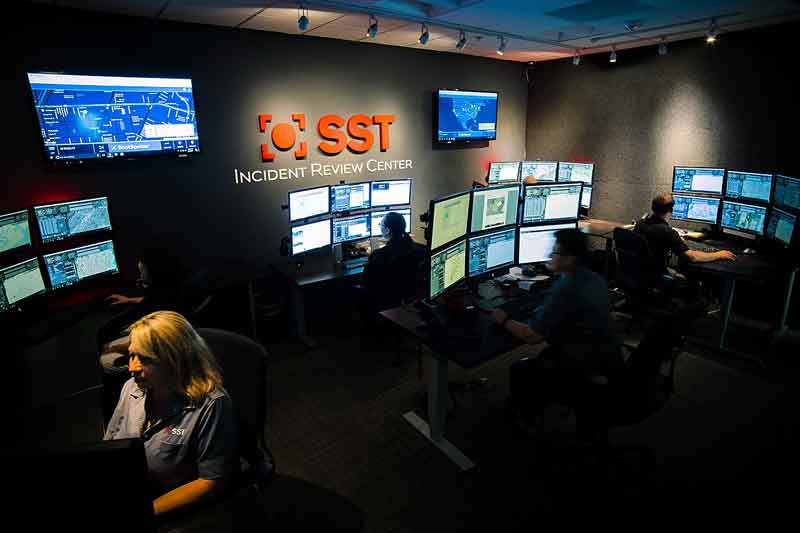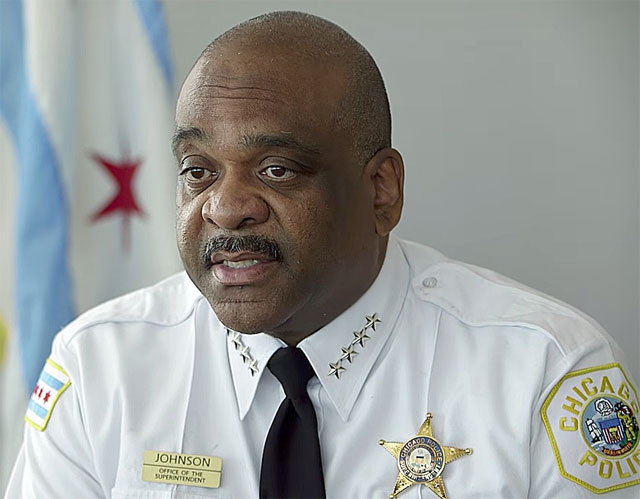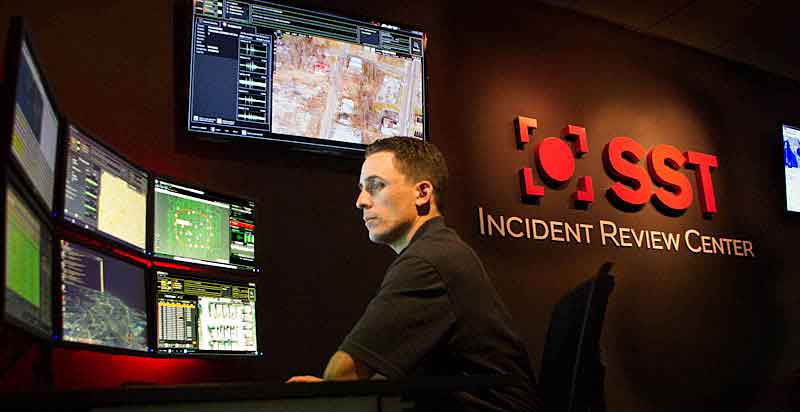
Gun violence today is a massive problem for many of our most vibrant urban communities.
There are more than 13,000 gun-related homicides a year in the US with 10 times more people wounded.
Unfortunately, incidents of gun violence are significantly underreported as they happen and cities are battling to gain better awareness of these events in real-time to respond to them quickly.
Law enforcement leaders do not have the budget to solve the problem by simply adding more officers.
What is required is a new approach to policing and a strategic use of their resources.
That is where ShotSpotter, a competitor in the 2018 ‘ASTORS’ Homeland Security Awards Program, comes in as a technology that many agencies call a “force multiplier” or game changer.”
(Hear from police agencies and mayors directly as they explain how ShotSpotter is working in their communities. Courtesy of ShotSpotter and YouTube)
What is ShotSpotter?
ShotSpotter is a gunshot detection and alerting service for police departments that uses sophisticated acoustic sensors throughout a coverage area to detect, locate and alert agencies about gunfire incidents in real-time.
The digital alerts provide patrol officers with notification of gunfire in less than 60 seconds with a precise location on a map (latitude/longitude) and critical data such as number of rounds fired, number of shooters, and whether high-caliber weapons are being used data is delivered to a smartphone or police vehicle laptop.
This data-driven policing approach drives smarter deployment tactics and protects officers with increased tactical awareness.
It also enables law enforcement agencies to better connect with their communities and bolsters their mission to protect and serve.
ShotSpotter is currently deployed in more than 85 cities across the United States, including Denver, Milwaukee, Chicago and New York.
(See how ShotSpotter is homing in on the location of gunfire while simultaneously, a second computer system turns on the largest network of surveillance cameras in the country to help locate and search for suspects and victims to support Chicago Police. Courtesy of ShotSpotter and YouTube)
How does ShotSpotter work?
ShotSpotter uses acoustic sensors that are strategically placed in an array of approximately 20 sensors per square mile.
These sensors are connected wirelessly to ShotSpotter’s centralized, cloud-based application to reliably detect and accurately triangulate (locate) gunshots.

Each acoustic sensor captures the precise time and audio associated with impulsive sounds that may represent gunfire.
This data, from multiple sensors, is used to locate the incident, which is then filtered by sophisticated machine algorithms to classify the event as a potential gunshot.
Expertly trained acoustic analysts, who are located and staffed in ShotSpotter’s 24×7 Incident Review Center, then further qualify those highlighted incidents.
These analysts ensure and confirm that the events are in fact gunfire.
In addition, the analysts can append the alert with other critical intelligence such as whether a full automatic weapon was fired and whether the shooter is on the move.
This process typically takes no more than 45 seconds from the time of the actual shooting to the digital alert (with the precise location identified as a dot on a map) popping onto a screen of a computer in the 911 Call Center or on a police officer’s smartphone or mobile laptop.
(Take a close look at ShotSpotter’s Incident Review Center. Courtesy of ShotSpotter and YouTube)
Chicago Expands ShotSpotter Coverage Area to More Than 100 Square Miles
Shooting Incidents in 2018 Down More Than 26% Over Same Period in 2017
ShotSpotter is being significantly expanded within the city of Chicago – now blanketing the nation’s third largest city with more than 100 square miles of coverage, up from 3 square miles in 2012.
Chicago is the company’s largest customer and one of more than 85 cities that use the ShotSpotter solution to help fight urban gun crime including New York City, Oakland, Milwaukee and Denver.
Chicago saw shooting incidents drop more than 26 percent and gun-related homicides by 20 percent in the first four months of 2018, as compared to the same period in 2017.
(Learn More. Courtesy of CBS Chicago and YouTube)
From February 2017 to April 2018, the city is reporting 14 consecutive months of declining gun violence.
District seven, Englewood, was reported to have a 61 percent decline in shooting and homicide violence in its district, to date, since deploying ShotSpotter in March 2017.
The Chicago Police Department has stated that its success in reducing gun violence is largely due to the combination of ShotSpotter and the introduction of Strategic Decision Support Centers (SDSCs) in key districts.
These centers use data-driven, evidence-based policing and feature ShotSpotter. Currently, the city has 11 SDSCs out of 22 districts using ShotSpotter.

“The one technology that has made the most difference in Chicago’s reduction in gun violence in the last 12 months has been ShotSpotter – it’s a game changer,” said Eddie Johnson, Superintendent of the Chicago Police Department.
“We are pleased with the progress made in the last year, but we plan to achieve even more. With our SDSCs and ShotSpotter, we want residents to feel safe and know we are ready to respond faster and predict where the next incident may occur.”
Using ShotSpotter, Chicago police receive instantaneous alerts of detected gunfire enabling them to arrive at the precise location of a shooting event quickly.

Instead of relying on a low rate of 911 calls, law enforcement can now respond in real-time to aid victims, interview witnesses, and collect forensic evidence.
This improves the overall effectiveness of the agency in identifying and apprehending shooters, and taking illegal guns off the streets.
It also reassures communities that law enforcement is there to serve them and helps to build bridges with local citizens.

Chicago police have reported that they have recovered over 2,500 illegal guns in 2018 to date.
“Chicago is an excellent example of how law enforcement is using ShotSpotter as a central element of a holistic program to reduce gun violence and improve relationships between law enforcement and the community,” said Ralph Clark, President and CEO of ShotSpotter.
“Data-driven policing leads to faster, more precise deployment of resources as well as the ability to better deter and prevent gun violence.”
ShotSpotter at a Glance
ShotSpotter is a global leader in gunfire detection and location technology providing one of the most trusted, scalable and reliable gunfire alert and analysis available today.
ShotSpotter helps law enforcement officers and security personnel identify, locate and deter gun violence.

ShotSpotter’s deep domain experience, along with cumulative agency best practice experience, deliver measurable outcomes that help reduce gun violence.
ShotSpotter possesses multiple patents resulting from nearly two decades of innovation in the area of acoustic location technology.
Based in Newark, California, ShotSpotter offers its solutions on a SaaS-based subscription model.
ShotSpotter Competes in 2018 ‘ASTORS’ Homeland Security Awards Program
AST focuses on Homeland Security and Public Safety Breaking News, the Newest Initiatives and Hottest Technologies in Physical & IT Security, essential to meeting today’s growing security challenges.
The 2018 ‘ASTORS’ Homeland Security Awards Program, is organized to recognize the most distinguished vendors of Physical, IT, Port Security, Law Enforcement, Border Security, First Responders, (Fire, EMT, Military, Support Services Vets, SBA, Medical Tech) as well as the Federal, State, County and Municipal Government Agencies – to acknowledge their outstanding efforts to ‘Keep our Nation Secure, One City at a Time.’
As an ‘ASTORS’ competitor, ShotSpotter will be competing against the industry’s leading providers of Innovative Gunshot Detection Solutions.
To Learn More about the ‘ASTORS’ Homeland Security Awards Program, see 2017 ‘ASTORS’ Homeland Security Award Winners Honored at ISC East.
 Over 100 distinguished guests from National, State and Local Governments, and Industry Leading Corporate Executives from companies allied to Government, gathered from across North America and the Middle East to be honored from disciplines across the Security Industry in their respective fields which included:
Over 100 distinguished guests from National, State and Local Governments, and Industry Leading Corporate Executives from companies allied to Government, gathered from across North America and the Middle East to be honored from disciplines across the Security Industry in their respective fields which included:
- The Department of Homeland Security
- The Department of Justice
- The Security Exchange Commission
- State and Municipal Law Enforcement Agencies
- Leaders in Private Security




















